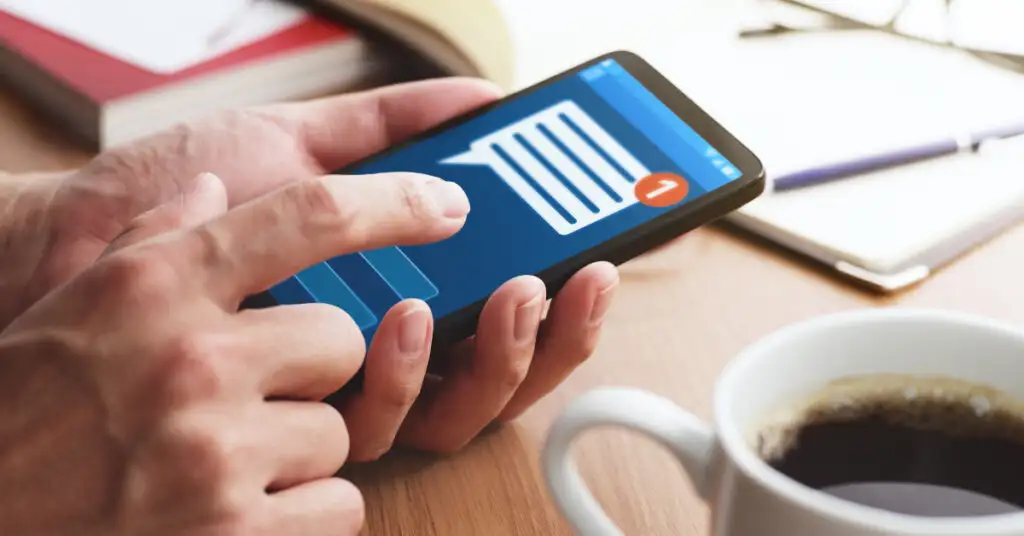What is a SMS and when to use it

What is an SMS
Text messages (SMS) have been a part of our lives for decades, but the origins of the technology date back further than you might think.
In 1984, a German engineer named Friedhelm Hillebrand, along with his colleague Bernard Ghillebaert, began to create a system that allowed them to send messages across the telephone network using GSM standards.
Their research eventually bore fruit in the 1990s. The first SMS was sent over Vodafone’s GSM network in the United Kingdom. By the 2010s, hundreds of thousands of text messages were being sent every second.
The technology has become a part of our daily lives, but there’s a question that many people have always wondered. That is, “What is the difference between SMS and text messages?”
Difference Between SMS and MMS
SMS stands for “Short Message Service” and is the most common form of text messaging used today. Each text message has a limitation of 160 characters, including spaces.
On the other hand, MMS stands for “Multimedia Messaging Service.” It’s a variant of SMS messages that allows users to send multimedia files such as images, videos, or audio over a traditional cellular network. Before mobile apps began using mobile internet networks to send larger files, MMS was a common way to send pictures, also known as picture messages, to friends and colleagues.
When a text message of up to 160 characters without an attached file is sent, it is called an SMS. Conversely, if a file like an image, video, emoji, or website link is included, the message becomes an MMS.
Advantages and Disadvantages of SMS vs MMS
While both SMS and MMS are excellent ways to interact with your customers, there are advantages and disadvantages to each communication method. In some cases, one may be better or more effective than the other depending on the use case or desired outcome.
Advantages of SMS
- SMS messages are short and to the point. Due to the 160-character limit, they don’t require much time or energy.
- SMS messages are cheaper to send than MMS messages.
- Most SMS service providers offer plans with unlimited text messaging, so there’s likely no cost to your subscribers.
Disadvantages of SMS
- You cannot send videos, photos, or sometimes even emojis in a traditional SMS message. If you want to offer your customers something more eye-catching, MMS might be the option to choose.
- SMS has a 160-character limit, which can be limiting if your use case requires sending longer messages.
Advantages of MMS
- MMS messages are typically more eye-catching, as people tend to be drawn to messages in their inbox that include an image or video.
- If you need to send bulk messages with a lot of content in each message, you can do so using MMS, as the character limit is 1,600.
Disadvantages of MMS
- MMS messages cost more. If you are like most budget-conscious businesses, you might want to limit the number of MMS messages you send.
- Not everyone can receive MMS messages. While most people have smartphones these days, not everyone does, and some may not have MMS enabled on their cell phone plan.
- If you want to send custom-designed photos or videos, you might need to hire someone to create them, which is an additional cost.
With this type of marketing, messages can be sent en masse from other cell phones or computers, facilitating the entire sending process to those who have already registered their phone number in the company’s databases.
It’s important for SMS text message campaigns to be accompanied by links or to generate leads’ attraction to the website and have indicators of user interaction.
Other tools present in digital marketing strategies, such as the proper use of chatbots that can provide answers to predetermined general questions, can be used before users are redirected to a sales advisor.
With an SMS campaign, you can attract both new leads and those already in the sales conversion funnel but who have yet to make a direct purchase. The messages can be designed to maintain more active contact, informing about new products or promotions that can be tailored to the customer’s needs.
The use of SMS can reach those who are not active on social media or do not regularly check their email, making it an additional alternative to cover a wider population of the market niche. This can make the process of sending updates much faster and more efficient.
When to Use SMS
Since SMS messages have a character limit, they are best used for brief alerts or details that require immediate attention. Some use cases for SMS include:
- Order confirmations and shipping/tracking information.
- Business or product updates.
- Appointment reminders.
- Account information.
- Loyalty programs.
When to Use MMS
MMS messages are eye-catching, especially considering the higher engagement and sharing rates compared to SMS messages. You should use MMS for messages with high traffic potential or particularly important information.
Some use cases for MMS include:
– Mobile coupons and promotional codes.
– Product photos or menus.
– Birthday messages.
– Announcements of new sales/products.
– Abandoned cart messages.
If you are looking to implement a strategy using SMS or MMS messages, do not hesitate to contact us.
Juan Esteban Yepes
